Cyclone Tracy, Granville train disaster, Whiskey Au Go Go fire: The disasters that shocked Australia in the 1970s
CYCLONES, fires, train crashes and horrifying crimes: the 1970s saw plenty of tragedies. How we recovered from them helped shape Australia.
VIC News
Don't miss out on the headlines from VIC News. Followed categories will be added to My News.
THE 1970s was a decade of tragedy in Australia with disasters — both natural and human-induced — that cost hundreds of innocent lives.
January 17, 1970: Cyclone Ada, North Queensland

Cyclone Ada ploughed into the Whitsunday Islands and the Queensland coast between Mackay and Bowen.
Thirteen people died, and the storm tore through popular island resorts and coastal towns, causing damage estimated at a 1970 value of $12 million
April 12, 1970: Road crash, Gawler, South Australia
A double-decker bus crashed into the side of a train at a level crossing known as Wasleys Crossing. near Gawler, north of Adelaide.
Seventeen people were killed and 45 were hurt.

October 15, 1970: West Gate Bridge collapse, Melbourne
A central span of the West Gate Bridge broke free and plunged about 50 metres into the Yarra River and mud flats below, killing 35 men and injuring 18.
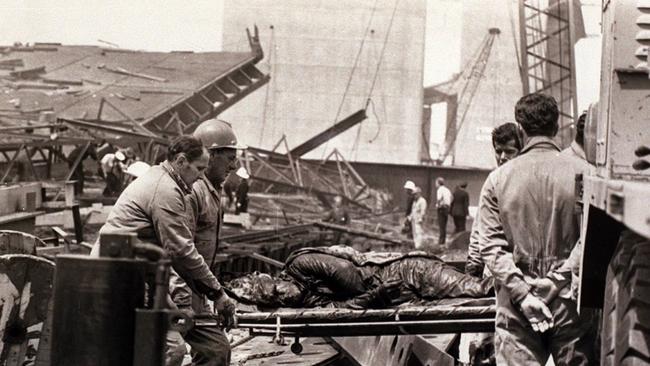
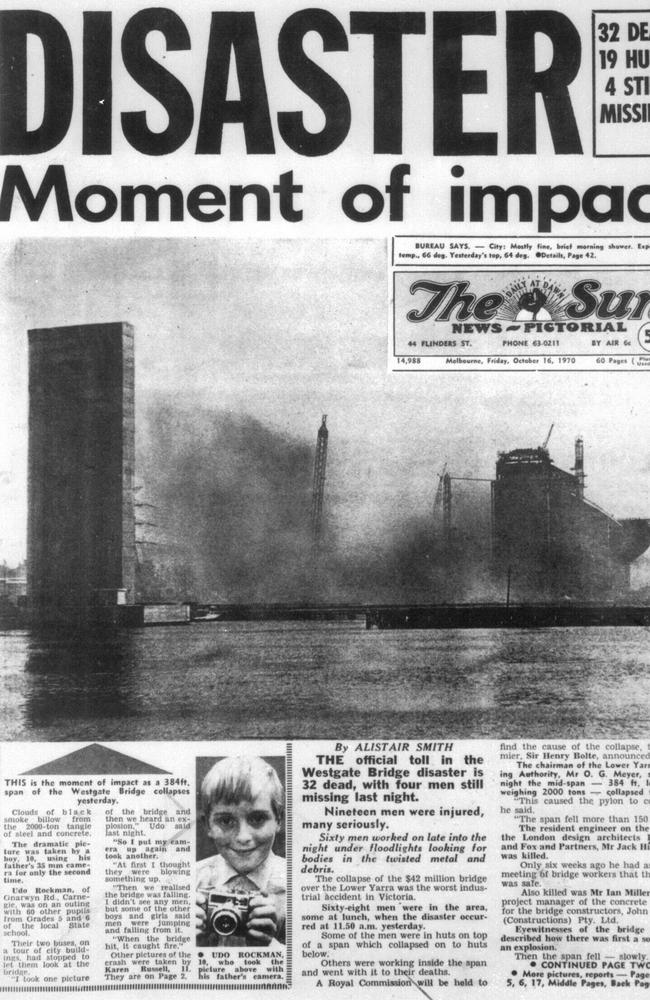
The accident was the subject of a royal commission that found engineering faults laid at the heart of the accident.
It took another eight years before the bridge was opened to traffic.
January 26, 1971: Floods, Canberra
Seven people including four children died and 15 people were injured when 95mm of rain fell in an hour in the Woden Valley area of Canberra, swamping local roads and sweeping vehicles away.
Commonwealth Police Constable Jeff Brown was awarded the British Empire Medal for Gallantry and four other officers were awarded the Queen’s Commendation for Brave Conduct, for their efforts to rescue people from the swirling waters that night.
July 31, 1972: Mine fire, Ipswich, Queensland
An explosion ripped through the Box Flat colliery, causing a mine collapse.
The accident happened about 275 metres below the surface in the mine’s No. 5 shaft, where a fire was burning out of control.
Seventeen workers were killed.
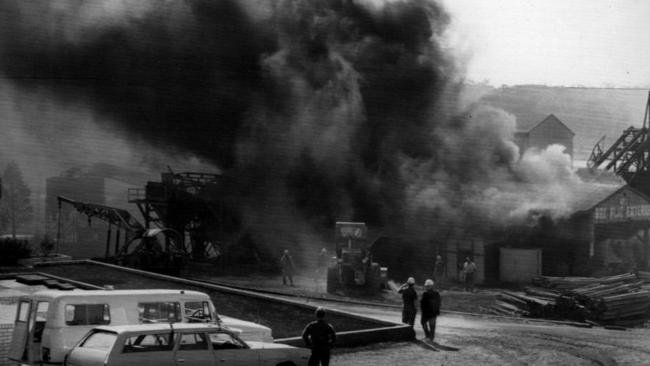
August 28, 1972: RAAF air crash, Kudjeru Gap, Australian territory of Papua and New Guinea
An RAAF Caribou aircraft carrying schoolboy air cadets from an annual training camp in Lae home to Port Moresby crashed in thick highland jungle.
The wreckage was not found for three days.
Four boys were found trying to walk out of the jungle to raise the alarm.
A fifth boy, winched from the crash site, died later.
In all, four RAAF members and 21 schoolboys were killed.
March 8, 1973: Whiskey Au Go Go fire, Brisbane
The Whiskey Au Go Go nightclub in Brisbane’s Fortitude Valley was engulfed in a deliberately lit fire about 2am, killing 15 patrons and staff.
About 100 people were inside when diesel, spilled from two 23-litre drums, was ignited, blocking the stairs to the street below.
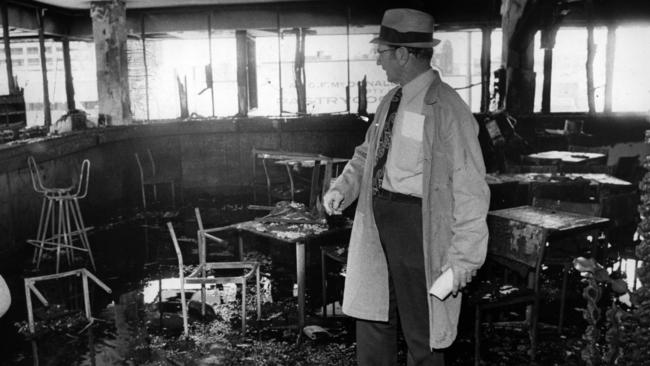
The fire escape door and stairs leading out of the club were greased, to hamper escape attempts. Two men — James Richard Finch, 29, and John Andrew Stuart, 33 — were later convicted of the murder of one of the victims.
The court heard the fire was part of an extortion-terror plot targeting local nightclubs.
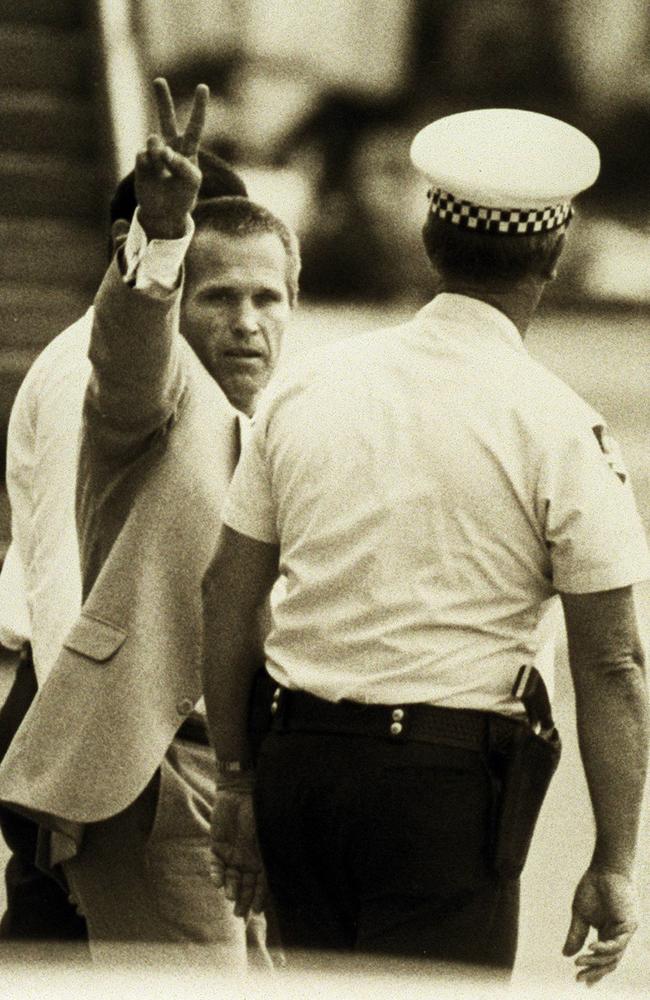
Stuart died in his Boggo Road jail cell in 1979 after a six-day hunger strike.
Finch was paroled in 1988 and deported to his native England.
September 23, 1973: Cabramurra, NSW
Brake failure caused a bus to plunge into the Tumut Ponds, a reservoir that formed part of the Snowy Mountains hydro-electric scheme.
Eighteen elderly tourists from South Australia died in the crash, with 21 others injured.
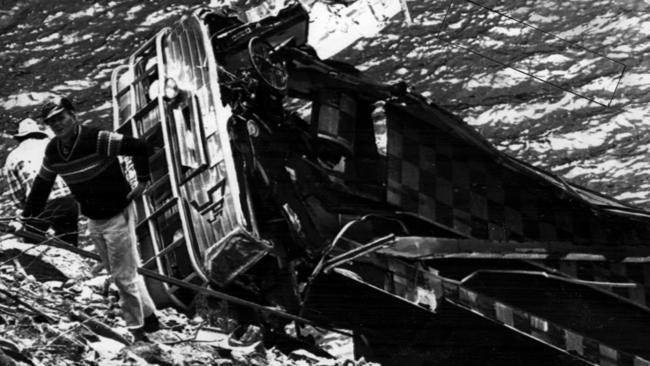
January 1974: Brisbane floods
The remnants of Cyclone Wanda dumped 642mm of rain on Brisbane in 36 hours on the Australia Day long weekend, causing the Brisbane River to flood to record levels.
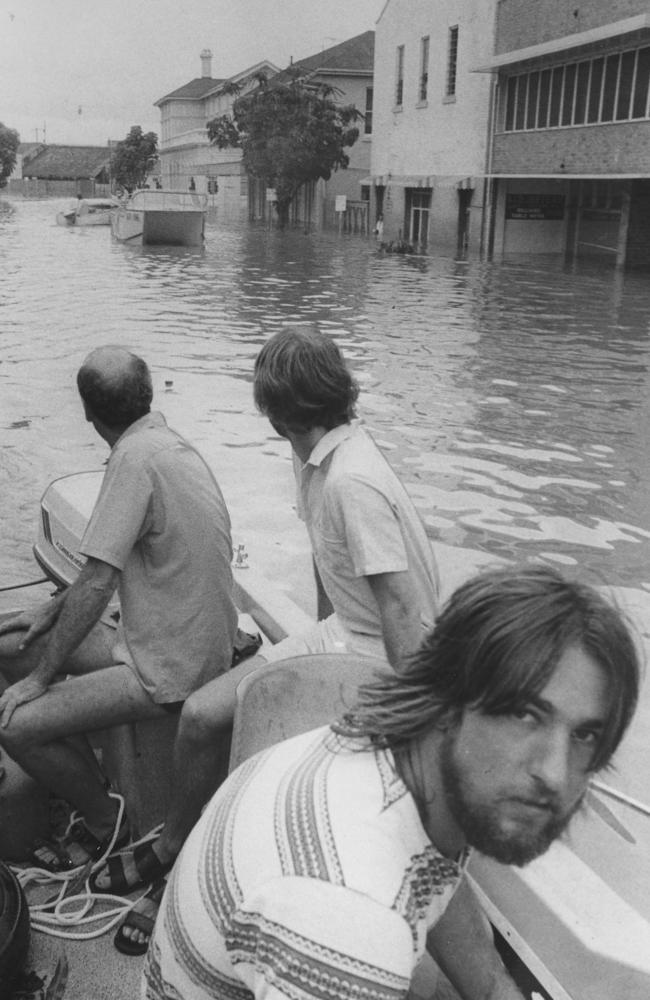

Fourteen people were killed, more than 300 were injured.
Damage was estimated at a 1974 value of $68 million as Ipswich and inner Brisbane suburbs went under.
December 24-25: Cyclone Tracy, Darwin
Cyclone Tracy smashed Darwin on Christmas Eve and Christmas Day, 1974, killing 71 people and injuring more than 500.
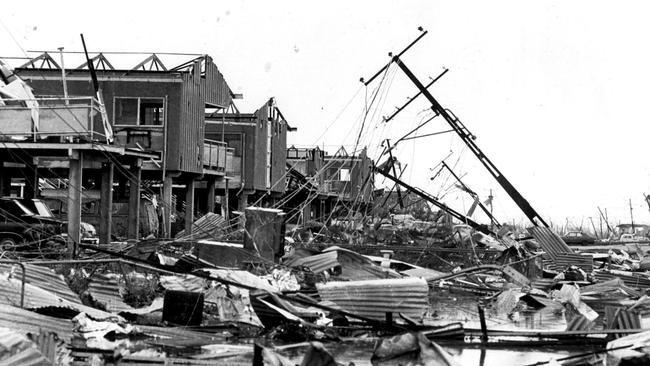
The anemometer at Darwin Airport registered a wind speed of 217km/h before it was destroyed by flying debris ahead of the arrival of the storm’s eye.
It’s estimated winds reached 260km/h.
The disaster sparked Australia’s largest peacetime evacuation, clearing Darwin of tens of thousands of people and leaving people essential to the recovery effort.
The Federal Government embarked on an unprecedented reconstruction effort to restore the shattered city.
As Darwin recovered, the Northern Territory was granted self-government in 1978.

January 5, 1975: Tasman Bridge disaster, Hobart
A bulk ore carrier, the MV Lake Illawarra, struck a pylon on the Tasman Bridge as it steamed up the Derwent River in darkness.
The collision caused a section of the bridge to collapse and blacked out the street lights.
Twelve people were killed — all seven aboard the Lake Illawarra when the span crushed the ship and five occupants of the four cars that plunged 45 metres into the river over the gap.
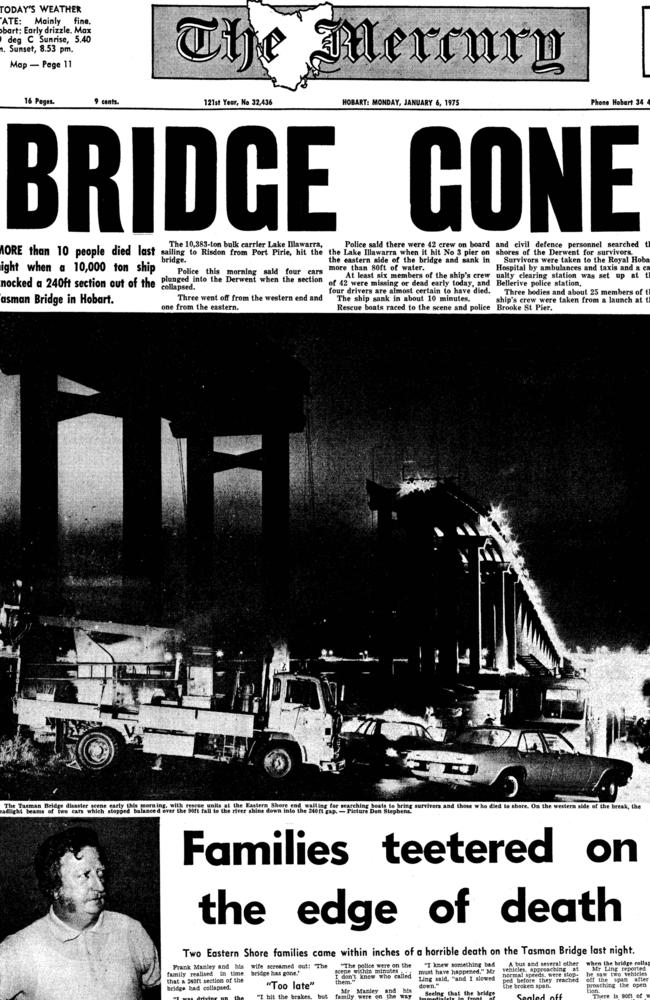
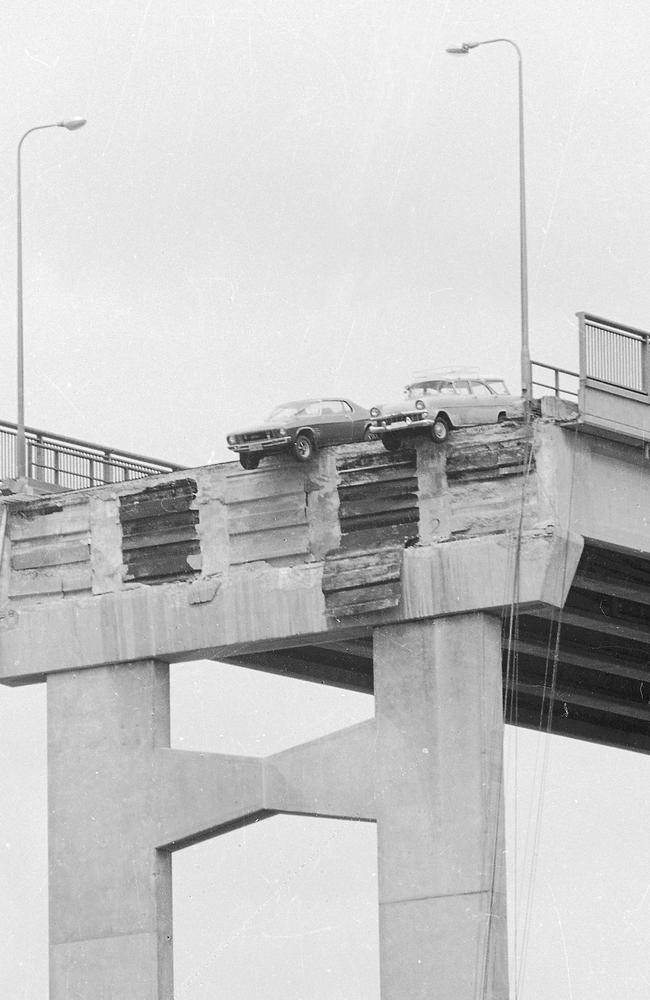
Two cars were left teetering over the edge of the smashed bridge..
Hobart’s eastern shore was effectively isolated. The bridge reopened in October 1977.
December 25, 1975: Savoy Hotel fire, Sydney
A 25-year-old cook, Reginald John Lyttle, set fire to a stack of newspapers inside the back door of the Kings Cross hotel — owned by colourful Sydney identity Abe Saffron and packed with guests for Christmas — around 5.30am.
Lyttle, a resident at the hotel, then went up to his room.
The fire soon took hold in two stairwells, trapping dozens upstairs.
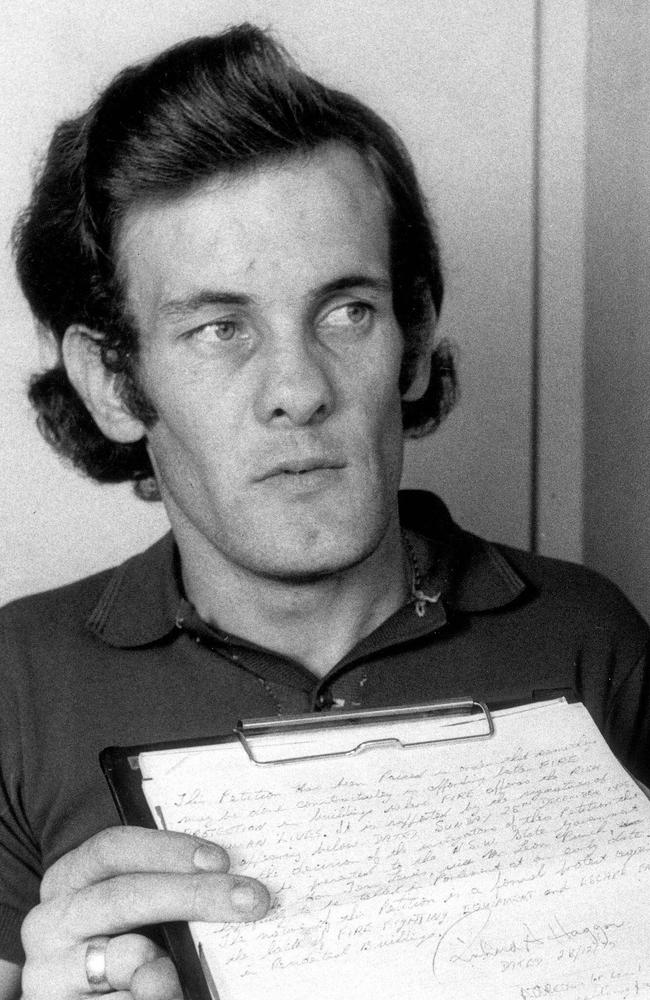

Fifteen people died and 25 were injured.
One guest threw her baby to firefighters from one of the upper storeys, then also jumped. Both were saved.
Lyttle was later convicted of four counts of murder and sentenced to four life terms plus 14 years for starting the fire, but was released in 2010.
January 18, 1977: Granville train crash, Sydney
Eighty-three people were killed and about 210 were injured when a packed morning commuter train from Mount Victoria in the Blue Mountains derailed and crashed into the supports of the Bold Street Bridge in Granville.

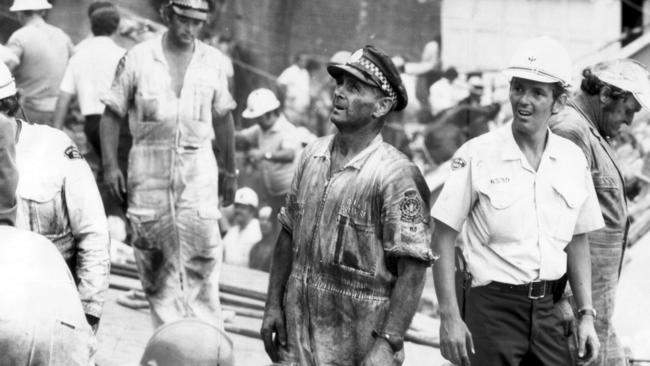
The concrete and steel bridge collapsed on to the middle carriages of the train.
The crash remains Australia’s worst rail accident.
February 8, 1977: Bushfires, Western District, Victoria
Eight people died as fires swept Victoria’s Western District. The worst hit area was around Smeaton.
July 10, 1978: Air crash, Melbourne
A Partenavia P68 aircraft crashed into houses in Airport West shortly after takeoff at Essendon Airport for a training flight..
The plane struck tram wires just outside the airport.
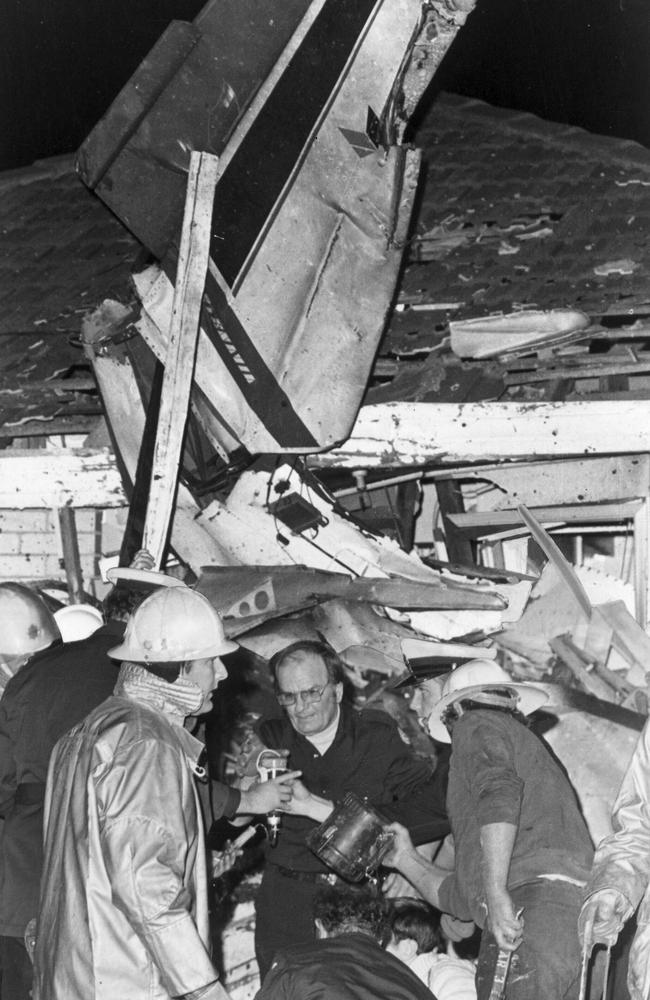
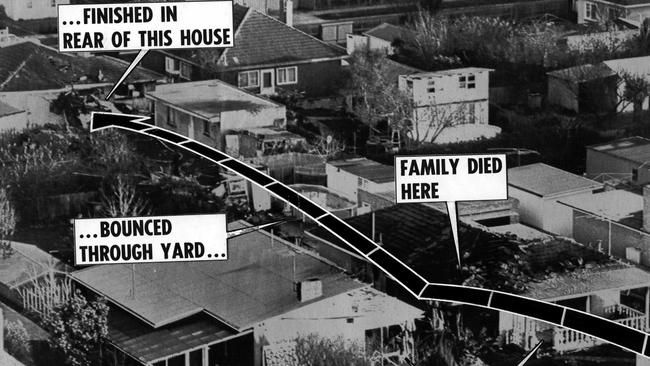
It crashed into one house, killing six members of one family inside, then bounced into two others before bursting into flames.
A 29-year-old mother, her four children, aged 10 to just three weeks and her 63-year-old mother all perished.
Three people inside the plane were badly hurt but survived.
Another person on the ground was also hurt.
January 9, 1979: Fire, Luna Park, Sydney
Seven people died inside the ghost train ride at Sydney’s Luna Park when an electrical fault sparked a fire inside the popular amusement.
The dead included two sons who took the ride with their father while their mother went to buy an ice cream.
Four schoolmates also perished inside the doomed ride.



